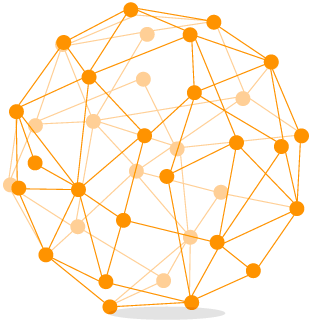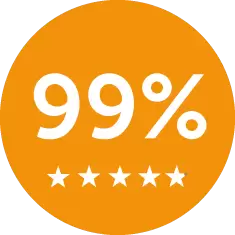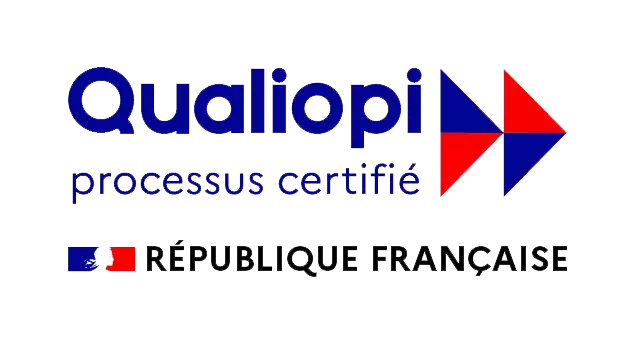ONLINE OPEN HOUSE
ONLINE OPEN HOUSE
August 28, 2024
from 6:30 p.m. to 8:30 p.m.
MEET US
Come and discover our training courses in strategic systemic approach, hypnosis and systemic coaching. You will meet the trainers and be able to talk with them!
" + details + "
" + ""; pc_confirmation.style.display = 'block'; var mp = document.querySelector('input[name="mp"]'); mp.value = '0'; } else { form.querySelector('._form- content').style.display = 'inline'; pc_confirmation.style.display = 'none'; } var hideButton = document.getElementById('hideButton'); , function() { var submitButton = document.querySelector('#_form_3_submit'); submitButton.disabled = false; submitButton.classList.remove('processing'); ]'); mp.value = '1'; window.location.href; }); const vgoAlias = typeof visitorGlobalObjectAlias === 'vgo': visitorGlobalObjectAlias; vgoAlias]; if (email && typeof visitorObject !== 'undefined') { visitorObject('setEmail', email); else if (typeof(trackcmp_url) != 'undefined' && trackcmp_url) { // Site tracking URL to use after inline form submission. _load_script(trackcmp_url); } if (typeof window._form_callback !== 'undefined') window._form_callback(id); }; window._load_script = function(url, callback, isSubmit) { var head = document.querySelector('head'), script = document.createElement('script'), r = false; var submitButton = document.querySelector('#_form_3_submit'); script.charset = 'utf-8'; script.src = url; if (callback) { script.onload = script.onreadystatechange = function() { if (!r && (!this.readyState || this.readyState == 'complete')) { r = true; callback(); } }; } script.onerror = function() { if (isSubmit) { if (script.src.length > 10000) { _show_error("3", "Sorry, your submission failed. Please shorten your responses and try again."); } else { _show_error("3", "Sorry, your submission failed. Please try again."); } submitButton.disabled = false; submitButton.classList.remove('processing'); } } head.appendChild(script); }; (function() { if (window.location.search.search("excludeform") !== -1) return false; var getCookie = function(name) { var match = document.cookie.match(new RegExp('( ^|; )' + name + '=([^;]+)')); return match ? match[2] } var setCookie = function(name, value) { var now = new Date(); var time = now.getTime(); var expireTime = time + 1000 * 60 * 60 * 24 * 365; now.setTime(expireTime); document.cookie = name + '=' + value + '; + ';path=/; Secure; SameSite=Lax;'; var addEvent = function(element, event, func) { if (element.addEventListener) { element.addEventListener(event, func); element['on' + event]; element['on' + event] = function() { oldFunc.apply(this, arguments); func.apply(this, arguments); form_to_submit = document.getElementById('_form_3_'); var allInputs = form_to_submit.querySelectorAll('input, select, textarea'), tooltips = [], submitted = false; var getUrlParam = function(name) { if (name.toLowerCase( ) !== 'email') { var params = new URLSearchParams(window.location.search); return params.get(name) || false; } // email is a special case because a plus is valid in the email address var qString = window.location.search; if (!qString) { return false; } var parameters = qString.substr(1).split('&'); for (var i = 0; i')); } } else if (elem.tagName == 'SELECT') { var selected = true; if (elem.multiple) { selected = false; for (var i = 0; i 31 && (charCode 57) && charCode !== 8) { e.preventDefault(); } }); }; var showPhoneInputError = function(inputId) { var errorMessage = document.getElementById("error-msg-" + inputId); var input = document.getElementById(inputId); errorMessage.classList.add("phone-error"); errorMessage.classList.remove("phone-error-hidden"); input.classList.add("phone-input-error"); }; var _form_serialize = function(form){if(!form||form.nodeName!=="FORM"){return }var i,j,q=[];for(i=0;i
The Clinical Master of Giorgio Nardone LACT/CTS:
Training in Strategic Systemic Therapy by Giorgio Nardone (on the web)
29 days of clinical training on the Web in partnership with the Center for Strategic Therapy of Prof. Giorgio NARDONE. A unique intensive course to acquire techniques, strategies, therapeutic stratagems and specific protocols to treat different types of psychopathologies, some of which have become real best practices.
29 days of clinical training on the Web in partnership with the Center for Strategic Therapy of Prof. Giorgio NARDONE. A unique intensive course to acquire techniques, strategies, therapeutic stratagems and specific protocols to treat different types of psychopathologies, some of which have become real best practices.
Strategic Brief Therapy, founded by Paul Watzlawick and Giorgio Nardone, is based on a systemic vision of the world and of the human being. Composed of innovative therapeutic techniques and about thirty specific treatment protocols developed for different psychopathologies, some of which have become real best practices, Strategic Brief Therapy aims to achieve a rapid and concretely verifiable resolution of various psychological disorders.
Acquire an international diploma of Brief Strategic Therapist certified Lact and CTS attesting to a complete theoretical and practical training aimed at learning the various treatment protocols for the most common psychological disorders, according to the therapeutic approach developed by Giorgio Nardone and Paul Waltlawick, from the results of the Palo Alto School. The learning is centered on practice (simulations, role plays, exercises) and live case studies.
The master's courses are provided by international trainers from the medical world and scientific research, all graduates of the School of Specialization in Brief Strategic Therapy of the CTS of Arezzo of Prof. Giorgio Nardone. Each trainer is specialized and expert on the type of psychological disorder presented in the course not only from a theoretical point of view, but also and above all from a practical point of view. Excellence, rigor and experience are guaranteed.

TRAINING COURSE 2024/2025
Year 1
CLINICAL MASTER’S
PRACTICAL LEVEL
218 hours of lessons
3 individual supervisions of 45 minutes
Approximately 220 hours of personal work
Start of lessons: 09/27/2024
Price of training : €7,800
(special rate excluding agreement)
In partnership with ![]()
- Masterclass Prof. Giorgio NARDONE
- The foundations of the strategic systemic approach
- Phobias / Doubt / Panics
- Strategic problem solving / Strategic communication
- Obsessive Disorder / OCD / Paranoia / Borderline
- Eating Disorders / Psychotic / Sexual Disorders
- Depression / PTSD
- Strategic intervention with children and adolescents
- Addiction
- Evocative Language and Non-Trance Hypnotherapy
- Level 2 grid practice
- Syprene experience sharing
- International Webinar
- Collective supervision
- Individual supervision
Clinical Master's degree
at practical level
Year 2
CLINICAL MASTER’S
ADVANCED LEVEL
150 hours of lessons
3 individual supervisions of 45 minutes
Approximately 150 hours of personal work
+ 147 hours of internship
Start of lessons: 04/09/2024
Price of training : €5,900
(special rate excluding agreement)
- Questioning and relationship
- Strategic dialogue
- Improvement of practice and quality monitoring
- Mobilize the strengths of the individual
- Prescription of tasks
- The emotions
- Intervention under duress
- Couples and families
- Practice and development
- International Webinar
- Collective supervision
- Practice observation
- Syprene experience sharing
- Tutoring and defense
diploma
- relationship clinician®
TRAINING COURSE 2023/2024
Web Clinical MASTER
PRACTICAL LEVEL
194 hours of lessons
3 individual supervisions of 45 minutes
190 hours of personal work approximately
In partnership with ![]()
- The basics of the approach
- Masterclass Prof. Giorgio NARDONE
- Phobias / Doubt / Panics
- Strategic problem solving / Strategic communication
- Obsessive Disorder / OCD / Paranoia / Borderline
- Eating Disorders / Psychotic / Sexual Disorders
- Depression / PTSD
- Strategic intervention with children and adolescents
- Addiction
- Evocative Language and Non-Trance Hypnotherapy
- Level 2 grid practice
- practice improvement
- Syprene experience sharing
- Individual supervision
- Collective supervision
- International Webinar
Clinical Master in
Strategic Brief Therapy
Clinical MASTER'S
DEVELOPMENT
PROFESSIONAL
LEVEL
150 hours of lessons
3 individual supervisions of 45 minutes
approximately 150 hours of personal work
+ 147 hours of internship
- Questioning and relationship
- Strategic dialogue
- Improvement of practice and quality monitoring
- Mobilize the strengths of the individual
- Prescription of tasks
- The emotions
- Intervention under duress
- Couples and families
- Practice and development
- International Webinar
- Collective supervision
- Individual supervision
- Tutoring and defense
- International Webinar
- Practice observation
- Syprene experience sharing
relationship clinician diploma
Frequently Asked Questions
SCHOOL COURSES
- online training can I integrate without clinical practice?
Our training courses accessible with a Bac level, without clinical experience are as follows:
- https://www.lact.fr/formation-systemique
- https://www.lact.fr/diplome-coach-systemique-en-ligne
- https://www.lact.fr/management-de-la-relation
Our training courses accessible with a Bac+3 in the field of health with clinical experience.
- https://www.lact.fr/du-systemique-strategique-avec-paris-8-en-ligne
- https://www.lact.fr/formation-hypnose-ericksonienne-en-ligne
Accessible training with a Bac+4/5 health professional with confirmed clinical experience.
For any registration, an interview may be proposed with Mr. Vitry Grégoire, Director of Lact, during which your professional background, your motivations and your project will be evaluated, in order to validate or not your application file.
- What are the differences between the DU Clinic of the relationship and strategic intervention and the LEVEL 1 foundations of the school?
There is little difference between LEVEL 1 in systemic approach and DU
Several modules are common core except:
- The “Strategic Communication” module proposed in LEVEL 1, replaced by the “Internship and tutoring” module, just like the “improvement of practice” module replaced by the “emotional regulation” course.
Of course, you have the possibility to register for the modules if you wish. You will be asked to validate them if you then wish to join LEVEL 2 of the school. - The collective supervision module for which you have a specific supervisor.
- A practical internship of 147 hours and the defense of a dissertation is required to validate the DU
- What are the prerequisites for joining the school and the DU?
The "Relationship Clinic and Strategic Intervention" DU is open to professionals from the clinical or social world who wish to obtain University recognition.
It is necessary to hold a BAC + 3 and clinical experience in helping relationships. With regard to the course of the school in strategic systemic approach:
- Foundations level: Bac level.
- Practical Level: You must have validated the foundations level.
- Advanced level: You must have validated the foundation and practical levels.
- Is it possible to assert systemic equivalences?
Requests for equivalence are made on file with an interview.
- What are the conditions for obtaining certification and validating the years?
Foundations level:
- have followed 75% of the live sessions and obtained the minimum mark of 7.5/10 for all the tests and 6/10 for the homework for the year.
- have followed the 3 hours of individual supervision and validate the duty of follow-up.
- present a case in collective supervision and validate the duty of supervision.
Practical level:
- have followed 75% of the live sessions and obtained the minimum mark of 7.5/10 for all the tests and 6/10 for the homework of the year.
- justify a practice of 10 hours of intervention.
- have validated the 3 hours of individual supervision and validate the duty of follow-up.
- present a case in collective supervision and validate the duty of supervision.
Level Perfection of the “Clinician of the relationship” training course (generalist or clinical course)
- have followed 75% of the live sessions and obtained the minimum score of 7.5/10 for all the tests and 6/10 for the homework for the year.
- justify a practice of 50 hours of intervention.
- have validated the 3 hours of individual supervision and validate the duty of follow-up.
- present a case in collective supervision and validate the duty of supervision.
- carry out a 147-hour internship which will be the subject of a dissertation in which your appropriation of the systemic and strategic model and your implementation in the field will be assessed.
- What recognition of the diploma issued at the end of the strategic systemic training course?
At the end of the 3 years of the course of strategic systemic training, you will be awarded the diploma "Systemician - Clinician of the relationship".
Certain courses may be subject to a University certificate. - Is this training suitable for coaches?
Certain training courses (generalist, systemic coach or systemic management and coaching) perfectly concern coaches.
It will allow you overall to acquire a systemic reading in your fields of intervention and more specifically to learn how to analyze the context of the change project, to recognize and manage the different types of resistance to change and to develop resilience at work, in particular with the business path. - Can we follow only the business modules?
You can follow the company modules separately.
However, this does not give you access to the Systemic Coach diploma. This diploma is issued to you after having obtained at least the certification of levels 1 and 2 and/or 3, and of the business modules to which you have access throughout the duration of your training. - I am currently HRD and I want to train in psychotherapy to better support my employees.
Can I join the school? The training course is open to managers, HRDs, or for those who work in HR departments, social relations or training.
You will learn to recognize the dynamics that lead to and fuel the individual or collective problems that you may encounter in your business life (burn-out, harassment, relationship problems, organizational change) and learn to quickly find effective and lasting solutions. Thanks to its methodology, you will also develop strategic skills to better intervene in the field of business or within an institution. You can also more specifically integrate our relationship management training which allows you to deploy your resources to improve your professional performance but also to better understand the relationship and psychological issues. All our training courses are provided by specialized international trainers from the world of business and university.
- I cannot fully commit myself due to scheduling and/or budget constraints.
What are my possibilities? It is entirely possible for you at first to follow only a few à la carte modules to meet your needs without committing to the full year.
A 30% discount will be granted to you from an amount of 3,000 euros. You can also complete the Practical Year and the Relationship Clinician Development Year in 2 years. - If I want to test a few modules before committing to the year, is that possible?
You can completely follow individual modules before registering for the year. In this case, the modules you have taken may be deducted from the annual price, for registration during the year.
- What are we asked for as an internship?
It is a practical and/or observation internship, which you can do for example in a center, a firm, an association, or an institution according to your profile and which allows you to deploy your learning.
From the 2nd and 3rd year, you are asked to practice. If you already practice, it is possible to integrate your own practice into your internship but you will be asked, as far as possible, to devote time from your practice to the application of the model in order to produce work related to your training.
FUNDING
- Can your training be financed through the CPF or otherwise with the employer?
You have the option of applying for funding directly from your employer.
To date, it is possible to obtain funding via your CPF for the "create your own business" training.
- I am a job seeker, is it possible to apply for funding from Pôle Emploi?
You have the possibility to apply for funding from Pôle Emploi, via the KAIROS platform, for this you can contact Leila by email: - Can we pay in several installments?
You can pay in 3 installments (with
50 € administration fee ) or in 10 installments (with 150 €) directly on our site when you register.
| Funding arrangements | Persons concerned |
|---|---|
| Personal financing in 1 installment, 3 installments + €50 application fee, 10 installments + €150 application fee | Anyone wishing to register for LACT training |
| Company-HR Department (via attached OPCO) | company employee |
| CPF via Moncompteformation.gouv.fr | Employee, job seeker, liberal profession, business manager |
| Pôle Emploi (via KAIROS) Regional councils | Job seeker |
| FIFPL (liberal prof. excluding doctors), FAF-PM and ANDPC (doctors), AGEFICE (entrepreneur), FAFCEA (craftsman, merchant) | Liberal profession, business manager, auto entrepreneur (in addition to or instead of the CPF) |
| The skills development plan | Employee and civil servant (large company and administration) |
| Agefiph | Person with a disability |
| CSP (Professional Security Contract) | Employee in situation of economic redundancy |
PRACTICAL PROGRESS OF OUR TRAINING
- How is the remote practice going?
All classes take place via the ZOOM platform which offers the possibility of creating different spaces/rooms to offer you group work (regardless of the size of the group). In this, it is very easy for us, logistically, to organize these practice times.
- How to connect to the courses?
To connect to the lessons, you must have a good internet connection and in the event of an unstable connection, you can do so by telephone, while following the videoconference.
- Is it compulsory to be present for the lessons?
The training is in web-face-to-face, so you are asked to be present at the lessons.
However, we exceptionally accept a few absences (while recalling that one of the module validation criteria is an attendance time of 75%). Although this training takes place only online, we have interaction at heart, because practice is a central point in learning and these face-to-face sharing times allow us to set up an interactional and experiential dynamic. Experience is essential to learning.
- Is all of the training taking place remotely?
The entire training takes place remotely but you have the possibility of carrying out your hours of individual supervision in Paris in person. New for 2023: We are setting up the possibility of taking some face-to-face courses (limited number of places).
- How do we access course content?
You have access to the video recording, the slides, the bibliography, an exchange forum and all the knowledge tests for the validation of your modules by logging into your Moodle account. This account is accessible throughout the duration of your registration at the school.
- Are all the courses in French?
Some courses are in Italian or English simultaneously translated into French.
To find out the prices, select the training that interests you
MAPPING OF ALL LACT TRAINING COURSES
AND STRATEGIC APPROACH
Prerequisites
_
general
Bachelor's degree
with or without
clinical experience
clinical
Bac +3
with
clinical experience
Bac +5
with
clinical practice
education
Bachelor's degree
with or without
teaching experience
Bac +3
with
teaching experience
BUSINESS
Bachelor's degree
with or without
coaching experience
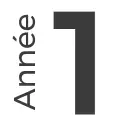
LACT
CERTIFICATE -
FOUNDATIONS LEVEL
UNIVERSITY
DIPLOMA -
RELATIONSHIP
CLINIC AND
STRATEGIC
INTERVENTION -
with
Paris 8 University
DIPLOMA
-
MASTER
®
IN
STRATEGIC SYSTEMIC
LACT
CERTIFICATE –
EDUCATION
FUNDAMENTALS LEVEL
UNIVERSITY
DIPLOMA -
STRATEGIC
SYSTEMS APPROACH TO
EDUCATION
-
with
Paris 8 University
LACT
CERTIFICATE -
SYTEMIC
COACHING
FUNDAMENTALS LEVEL
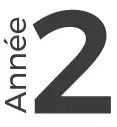
LACT CERTIFICATE - PRACTICAL LEVEL
COACH
DIPLOMA ®

SYSTEMICIAN ® - RELATIONSHIP CLINICIAN ® DIPLOMA - ADVANCED LEVEL
CLINICAL MASTER®![]()
DIPLOMA MASTER HYPNOSIS
AND STRATEGIC APPROACH

general
Bachelor's degree
with or without
clinical experience
clinical
Bac +3
with
clinical experience
Bac +5
with
clinical practice
LACT
CERTIFICATE -
FOUNDATIONS LEVEL
UNIVERSITY DIPLOMA
RELATIONSHIP
CLINIC AND
STRATEGIC INTERVENTION
with Paris 8 University

MASTERS
®
DIPLOMA IN
STRATEGIC SYSTEMIC
BUSINESS
Bachelor's degree
with or without
coaching experience
education
Bachelor's degree
with or without
teaching experience
Bac +3
with
teaching experience
LACT
CERTIFICATE -
SYTEMIC
COACHING
FUNDAMENTALS LEVEL
LACT
CERTIFICATE –
EDUCATION
FUNDAMENTALS LEVEL
UNIVERSITY
DIPLOMA –
STRATEGIC
SYSTEMS APPROACH TO
EDUCATION
with Paris 8 University

PRACTICAL LEVEL CERTIFICATE
DIPLOMA
®

SYSTEMICIAN ® - RELATIONSHIP CLINICIAN ® DIPLOMA - ADVANCED LEVEL
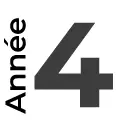
CLINICAL MASTER®![]()
DIPLOMA MASTER HYPNOSIS
The first web training in strategic systemic approach with Giorgio Nardone for health and helping relationship professionals
Giorgio Nardone's LACT/CTS clinical master's is training in a systemic and strategic approach that is unique in France. Intended for psychiatrists, psychologists, psychotherapists, doctors or helping relationship professionals who can demonstrate solid practice. This training offers a specialization in brief therapy in the field of psychopathologies.
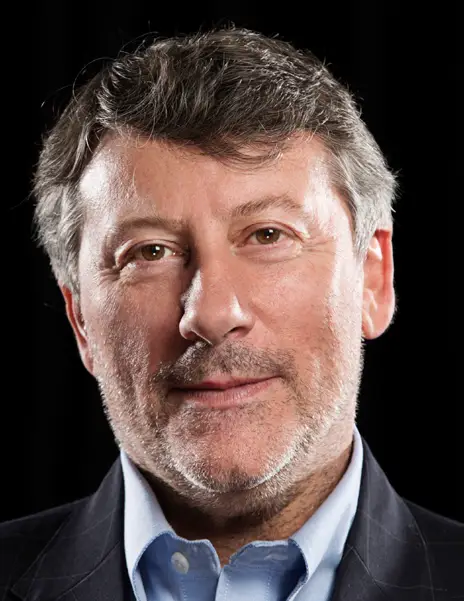 The Clinical Master of Giorgio Nardone is organized in collaboration by LACT and the Center for Strategic Therapy of Arezzo (CTS). This clinical master's degree is the first teaching course in France in the strategic systemic approach provided by CTS teachers.
The Clinical Master of Giorgio Nardone is organized in collaboration by LACT and the Center for Strategic Therapy of Arezzo (CTS). This clinical master's degree is the first teaching course in France in the strategic systemic approach provided by CTS teachers.
A student of Paul Watzlawick, Giorgio Nardone is the founder of the Center for Systemic and Strategic Therapy in Arezzo. Taking up the theories of the school of Palo Alto, it is now internationally recognized. He has created dozens of innovative therapeutic techniques and formulated different specific treatment protocols for particular pathologies such as obsessive and compulsive phobic disorders or eating disorders.
Alongside the clinical setting, his activities and research concern communication and systemic and strategic problem solving applied to managerial contexts and to artistic and sports performance. Its theoretical and applied formulations are considered a true "school of thought" that inspires researchers and professionals around the world.
The Clinical Masters of Giorgio Nardone organized in collaboration by LACT and the CTS of Arezzo brings together the teaching of the original intervention models patented by Giorgio Nardone:
- Brief strategic therapy with treatment protocols and therapeutic strategies dedicated to the different types of psychopathology.
- Strategic problem solving
- Systemic and strategic coaching.
It is aimed at all practitioners at the BAC+4 level with a practice of the helping relationship. The Masters includes 170 hours of lessons, 3 individual supervisions of 45 minutes and approximately 175 hours of personal work.
Treated psychopathologies
Since 1985, Giorgio Nardone has carried out empirical and experimental research aimed at developing brief therapy models that could offer rapid and effective solutions to the most important forms of psychopathology.
Brief systemic and strategic therapy is currently the most effective and efficient psychotherapy on a wide range of psychopathologies, in particular for cases of panic attacks, obsessive-compulsive disorders, anorexia, binge eating, vomiting or even sexual dysfunctions.
In the Clinical Master of Giorgio Nardone LACT/CTS, several types of pathologies are addressed, including phobias , pathological doubt, panics , obsessive disorders, OCD, paranoia, borderline profiles , eating disorders, psychotic disorders and sexual , depressions and PTSD disorders .
A scientific approach to research-action applied to psychology
Communication and the language of change
Performative strategic communication (or hypnosis without trance)
The strategic dialogue
This technique represents both the starting and finishing line of all the research, clinical practice and managerial advice carried out by Giorgio Nardone and Paul Watzlawick at the Center for Strategic Therapy in Arezzo after its foundation. It can be considered as a "finish line" because the strategic dialogue, an advanced technique for conducting a single "therapeutic" session and capable of inducing radical changes in the interlocutor, represents a synthesis of all that has been achieved so far in the field. This refined strategy, which aims to achieve maximum results with minimum effort, can be seen as a natural evolution from the previous formulation of specific treatment models for particular pathologies. These are therapeutic stratagems and a sequence of ad hoc maneuvers constructed specifically for different types of problems. This was the great success of such protocols in terms of effectiveness and efficiency in structuring the first therapeutic interview as a real intervention, rather than as a preliminary phase.
Thus, the questions became more and more strategic, the paraphrase became very reframing, the language became very evocative of sensations, and finally the prescriptions became the spontaneous evolution of a strategically constructed dialogue, rather than an injunction. forced. In this way, the approach of knowing the problems through their solutions, from a method of construction and pure research, has become an operational and strategic logic to be used during the first, and often the only, therapy or coaching session. The therapist, like a wise strategist, guides the interlocutor through skilful maneuvers, to be the main protagonist of the scene, so that the latter can convince himself of what he has come to feel and discover. The "magic" of this technique lies in its disruptive essentiality, in accordance with the Wisdoms of the Hellenic tradition, "not too much, just enough".

Strategic logic and problem solving
 Ever since humans have lived on Earth, they have had to develop logic to plan actions towards goals. Whether we are aware of it or not, we all use logics of thought and action whenever we want to achieve a certain goal.
Ever since humans have lived on Earth, they have had to develop logic to plan actions towards goals. Whether we are aware of it or not, we all use logics of thought and action whenever we want to achieve a certain goal.
The history of logic, as a discipline, emerges in the Hellenic world in the West and with the art of strategy in ancient China in the East. Until the advent of platonic philosophy, logic was a combination of art and science in the service of achieving various kinds of goals, such as winning a war or a tournament, successfully hunting prey, persuading someone or solve complex individual and social problems. Aristotle provided the first formulation of a rigorous model of logic, in which, however, everything that was not considered in this model, was excluded and labeled as a non-rigorous method. Consequently, art, creativity and, above all, non-linear dynamics (paradoxical, contradictory and circular dynamics) were excluded from rational logic when they were already recurrent in human dynamics. Since then, for more than two millennia, Western thought has been dominated by the "goddess of reason", that is, by rationalism of which Aristotelian logic was the main principle.
In fact, in academic philosophy, traditional and rational logics are still considered the essential point of reference for thought and action planning and non-linear and non-ordinary logics are again excluded from this context. Curiously, if we analyze the constant dynamic that each of us lives with ourselves, others and the world, we perceive that reason and rationality are not predominant, but that contradictions, paradoxes and beliefs dominate entirely, that is, anything that can be defined as logical ambivalence. Over the centuries, only a few authors have dealt with the logic of ambivalences, although these underlie the most frequent interactions between humans. For this reason, people who have worked on developing winning strategies have always exceeded the limits imposed by strict formal logic.
The strategic logic is an action planning model based on the objectives to be achieved and the problems to be solved, rather than on the respect of the reference theory. This type of logic has always considered the phenomena of logical ambivalence and used paradoxes, contradictions, prophecies and self-deception as real operational tools.
The implementation of this technique involves asking a person to imagine what the perfect scenario would be like once all current problems and difficulties have been completely overcome. In other words, a person is asked how the scenario would compare to the current situation once the problem has been fully resolved or the goal has been fully achieved. We have to convince our mind to imagine what the characteristics of the ideal situation would be once the strategic change has taken place. It may seem like a work of fantasy, but it is a way of observing the characteristics of the "ideal reality" to be achieved, which often allows us to see things that we were not able to understand. It's no coincidence that this was one of Leonardo da Vinci's favorite mental strategies. As for him, also in our case, this technique is used to free the pure imagination, to select the aspects that can be concretely achievable and then to start acting in this direction.
The systemic and strategic model of problem solving
The “scenario about the problem” technique
 It was not until the middle of the last century that some scholars began to draw attention to this form of logic which, despite being so influential in the lives of human beings, has been excluded from academic study. The Palo Alto school showed the importance of nonlinear dynamics: "circular causation" replaced "linear causation" and communicative paradoxes and self-fulfilling prophecies were identified as the building blocks of many important relationships between human beings and their reality.
It was not until the middle of the last century that some scholars began to draw attention to this form of logic which, despite being so influential in the lives of human beings, has been excluded from academic study. The Palo Alto school showed the importance of nonlinear dynamics: "circular causation" replaced "linear causation" and communicative paradoxes and self-fulfilling prophecies were identified as the building blocks of many important relationships between human beings and their reality.
Giorgio Nardone, as a direct student of Paul Watzlawick, embraced this tradition of studies and developed the models of non-ordinary logic through his work and his formulations by structuring a theoretical-applicative model of the logic of ambivalences which is divided into: self-deceptions, paradoxes, contradictions and beliefs. These are in turn divided into 13 different dynamics of nonlinear logic. All of this is embedded in a strategic logic model that allows people, when faced with a problem, to quickly construct an effective solution through the use of non-ordinary logical stratagems. These were already used in ancient Greece and China and, despite the advent of Aristotelian logic, they have been used continuously, in the history of mankind, by artists, scientists, rulers and managers. Giorgio Nardone has formalized an appropriate model of strategic logic, which respects the criteria and rigor of scientific research and, at the same time, facilitates inventiveness and application flexibility and the use of expedients that violate ordinary logic. Thanks to all this, what was originally an artistic approach, has become a real problem-solving technology, as the strategic solution models developed for different classes of problems have evolved and become not only more and more efficient and efficient because of their progressive refinement, but also reproducible, communicable and predictive in their effects. "The secret is that there are no secrets", a creative invention is not a stroke of genius, but the analysis of a problem that allows the therapist to see it from a non-ordinary angle.
mountaineering technique
The “how to make it worse” technique
This original technique is an essential element of the systemic and strategic model of problem solving formalized by Giorgio Nardone and represents a kind of "trump card" against seemingly immutable situations. It consists of asking ourselves what actions we should take or avoid to voluntarily worsen the current situation, which we would instead like to improve. Likewise, we may ask ourselves what things we should voluntarily think and/or avoid thinking to deliberately complicate these problems, rather than lead them to their solution. After that, we make a careful list by writing down the most important things first, then the less important ones. This may seem like an absurd question, since subjects would like to improve their condition by solving their own problems. However, this is a form of strategic self-deception based on the logic of paradox: “if you want to straighten something, first try to bend it even more”. The reader should know that if I really try to think of all the ways to make my situation worse, the effect will be of two types. I will identify a range of counterproductive actions, which I will immediately begin to dislike. And that, of course, will cause me to avoid them.
The second effect, even more surprising, is that the spirit, pushed in this direction, will rebound, like a spring, towards its opposite. That is to say, I will begin to see the situation from other points of view and often I will be able to design solutions that I was not even able to envisage before. It is no coincidence that all the greatest scientists in history, from Archimedes to Edison, have used this mental strategy extensively to increase their ability to invent. As William James, the first great modern psychologist, wrote: “genius is nothing but the ability to perceive things from an unordinary point of view”

Efficiency of brief therapies and the strategic systemic model of Giorgio Nardone
These logic models, in addition to the formulation of effective and efficient validated treatment protocols of brief systemic and strategic therapy , have made it possible to intervene successfully in non-clinical contexts, in particular in the world of art, military and sports performance, both at individual and team level. This theoretical-applicative development made it possible to apply the model to the world of productive organizations with measured efficiency with interventions in private companies and public institutions to solve their complex problems, as well as to train their managers to become effective problem solvers.
References
Nardone, G. (1977).
Brief strategic solution-oriented therapy of phobic and obsessive disorders. New York: Jason Aronson. Nardone, G. (1999).
Psychosolutions: how to solve complex human problems quickly. Bordeaux: The Spirit of the Times. Nardone, G. (2002).
Fear, panic, phobias. Bordeaux: The Spirit of the Times. Nardone, G. (2008).
Riding your tiger or how to solve complicated problems with simple solutions. Threshold. Nardone, G. (2016).
psychological pitfalls. Brussels: Satas. Nardone, G. (2009).
The paradoxical diet. Brussels: Le Germ. Nardone, G. (2017).
The love and hate of food. Paris: Enrick B. Nardone, G. (2018).
The fear of deciding. Brussels: Satas. Nardone, G. (2019).
Emozioni: istruzioni per l'uso. Milano: Ponte alle Grazie. Nardone, G., & Balbi, E. (2012).
Sail the sea unbeknownst to the sky. Brussels: Satas. Nardone, G., & Bartoli, S. (2019).
Oltre se stessi: science and art of performance. Milano: Ponte alle Grazie. Nardone, G., & De Santis, G. (2017).
Anatomy of Doubt. Paris: Enrick B. Nardone, G., Giannotti, E., & Rocchi, R. (2018).
Family conflicts. Paris: Enrick B. Nardone, G., & Portelli, C. (2005).
Knowledge through change. The evolution of strategic brief therapy. Brussels: Satas. Nardone, G., & Portelli, C. (2016).
Obsessions, compulsions, manias. Brussels: Satas. Nardone, G., & Salvini, A. (2011).
Dizionario internazionale di psicoterapia. Milan: Garzanti Libri. Nardone, G., & Salvini, A. (2012).
Strategic dialogue: communicating by persuading. Brussels: Satas. Nardone, G., Verbitz, T., & Milanese, R. (2005).
Prison of food: Research and treatment of eating disorders. London: Karnac. Nardone, G., & Watzlawick, P. (1993).
The art of change. Paris: The spirit of the times. Nardone, G., & Watzlawick, P. (2005).
Brief strategic therapy: Philosophy, techniques, and research. New York: Jason Aronson. Watzlawick, P. (2009).
Insight may cause blindness and other essays (WA Ray & G. Nardone, Eds.). Phoenix, AZ: Zeig, Tucker, & Theisen. Wittezaele, J.-J., & Nardone, G. (2016). A logic of mental disorders. Systemic and strategic operative diagnosis. The threshold.
Recent articles and videos
- How to improve your results as a practitioner?
- The PRS scale: a tool for measuring progress in therapy
- The systemic approach in psychiatric practice: where are we?
- How to become a psychotherapist
- NLP training and systemic approach, two complementary approaches
- How to become a therapist?
- Personal development training
- Breaking the silence around harassment
- Fight against the shadow of harassment
- Systemic approach training
- Problem Solving Scale: Assessing Clinical Improvement
- Support for people who are victims of moral harassment
- Thwarting moral harassment through a systemic and strategic approach
- A systemic approach to insomnia
- Understanding domestic violence using a systemic approach
Most Viewed Articles
- Online strategic systemic training course at LACT
- A surgeon's testimony on professional burnout
- Conflict management in business: Insurance case study
- 5 axioms of pragmatic communication (Paul Watzlawick)
- Family Caregiver: Managing Stress and Emotions at Work
- Assessment and management of PSR in business - Case study
- Bibliography
- LACT action and psychological and relational support unit
- Palo Alto's Strategic Systems Approach by Wittezaele
- BOOK "When work hurts"
 Drawing inspiration from the communication studies of sophists who saw communication as the foundation of the personal, interpersonal and social construction of reality in the Western world, renowned anthropologist Gregory Bateson conducted his research with an interdisciplinary group of
Drawing inspiration from the communication studies of sophists who saw communication as the foundation of the personal, interpersonal and social construction of reality in the Western world, renowned anthropologist Gregory Bateson conducted his research with an interdisciplinary group of 
